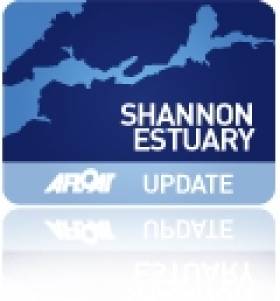Displaying items by tag: Shannon Foynes Port Compnay
Masterplan Sets Out 30 Year Vision for Ports on Shannon Estuary
#SHANNON PORTS- A draft masterplan Vision 2041, to develop port infrastructure and services for the Shannon Estuary over the next three decades, has been published by Shannon Foynes Port Company (SFPC).
The masterplan for Ireland's second largest port which has six terminals along the 500sq km navigable estuary, has specifically targeted growth and expansion options. Also identified are capacity and associated port infrastructure requirements, where SFPC has called for improved road and rail access.
In addition the masterplan is to take into consideration of non-core assets facilities at Foynes Port and Limerick Docks which consists of the single (Ted Russell) Dock basin.
Vision 2041 recognises the strategic need of the estuary to be in position to ensure future capability in handling larger trade volumes efficiently and competitively when the opportunities arise.
The masterplan has concentrated in identifying three key major objectives:
Significant expansion and infrastructural development in the deepwater Port of Foynes
Promoting non-core assets in Limerick Docks for alternative port / non port related activities
Managing the natural attributes of the estuary and its destination as an Ocean Energy Hub
The objectives of Vision 2041 are to realise the economic potential of the natural resource along the Shannon Estuary and developing positive promotion of the ports as a strategic economic driver for the Mid-West Region.
Copies of the SFPC Vision 2014 masterplan can be downloaded from clicking this LINK or alternatively a digital copy can be requested by contacting the Masterplan Team at 069 73100. The deadline for written submissions concerning the draft Masterplan is up to and incl. 1st February, see website for postal address and email details.
Masterplan for Shannon Foynes Port Company
Port expansion options are to be examined so to prepare ports for larger trade volumes when the opportunities arise. Also under consideration are the non-core assets at the Port of Foynes and Limerick Docks. To read more about the masterplan and the challenges and issues that has been identified in both ports click HERE.
The statutory jurisdiction of the estuary is under the control of SFPC, which is responsible for the estuary that runs from the mouth entrance marked by Kerry and Loop Heads and stretching far inland to Limerick City. The natural waterway can handle vessels of up to 200,000 deadweight tonnes (dwt) which are the largest ships that can dock in Irish waters.
























